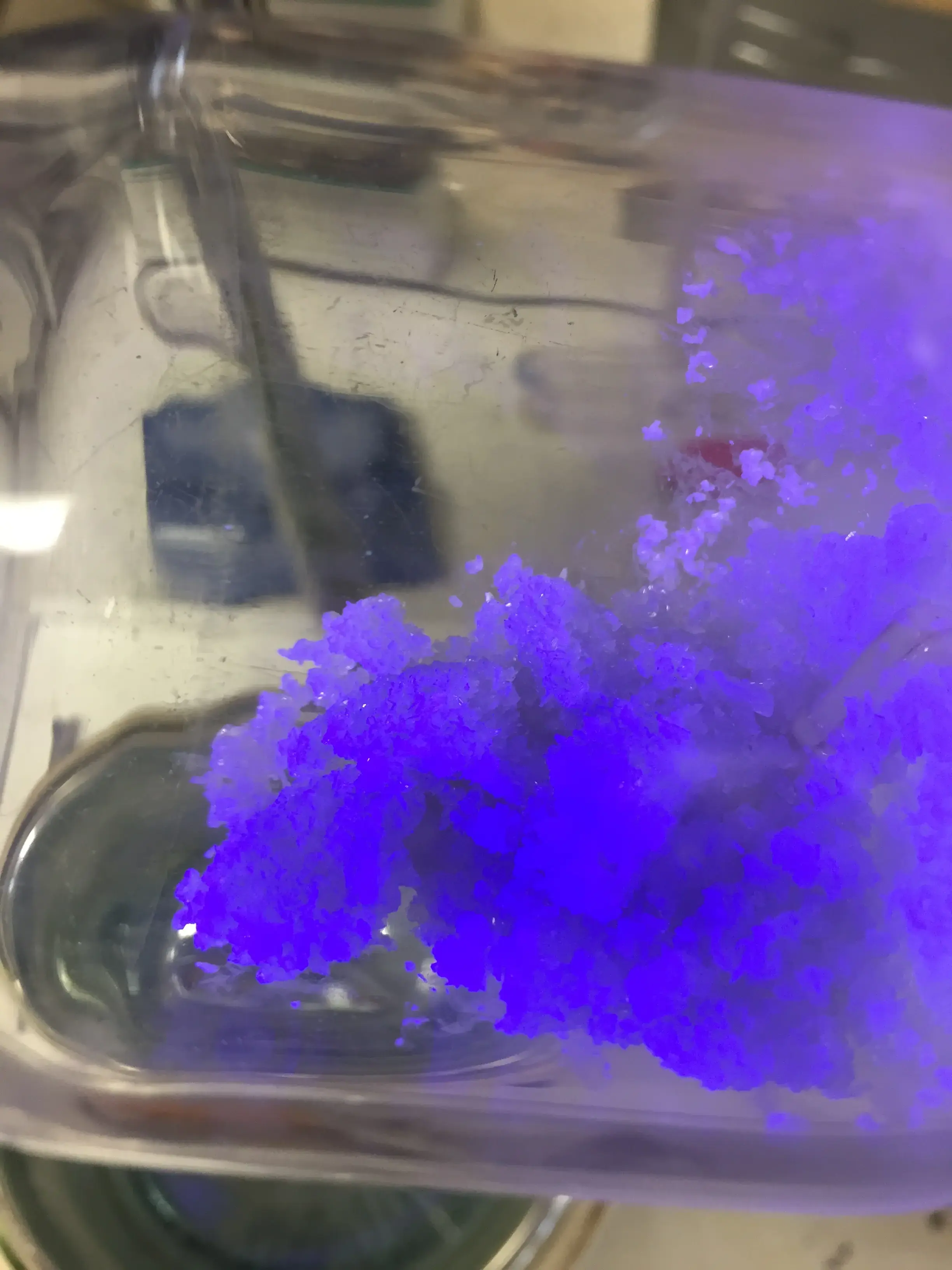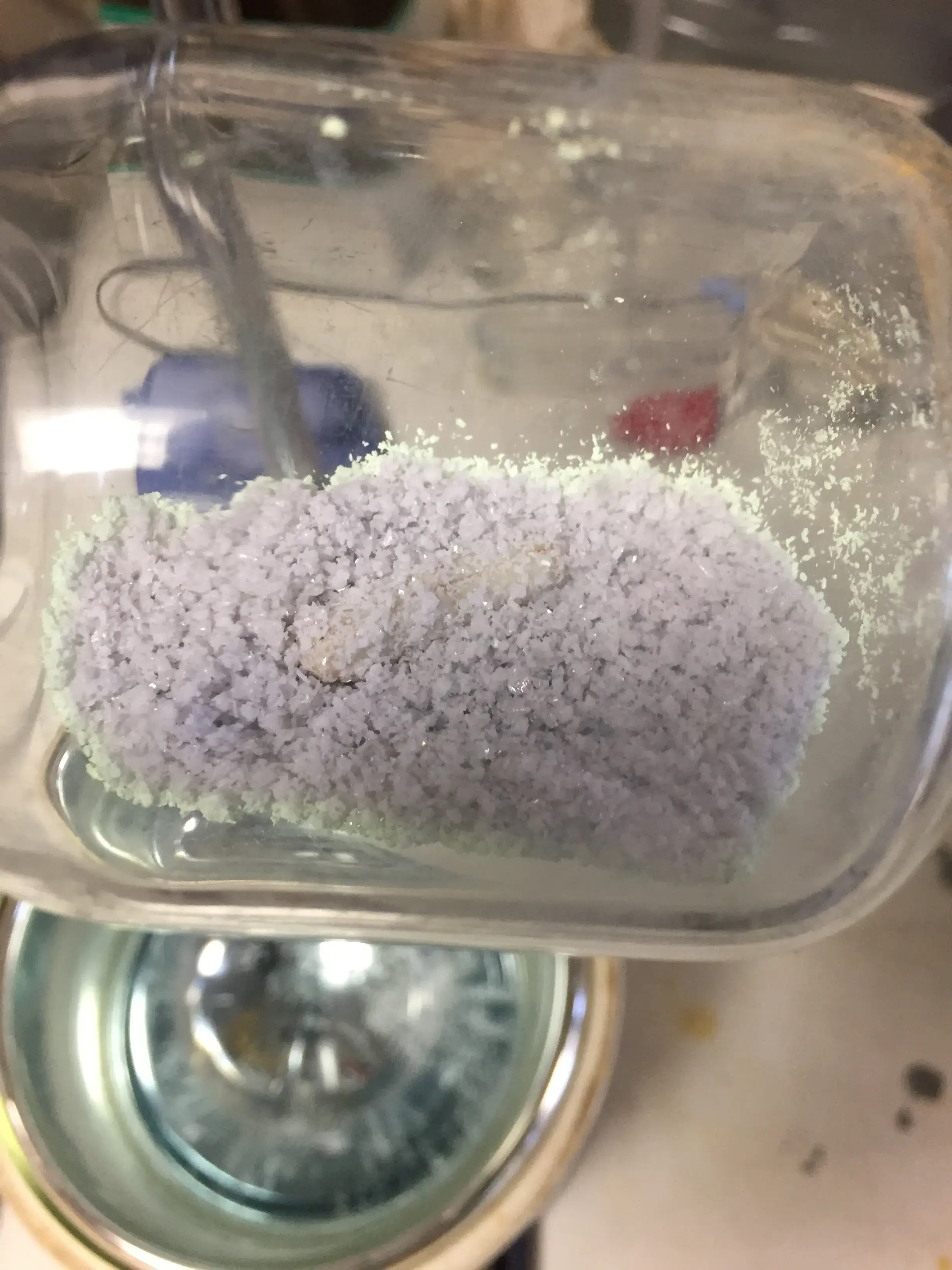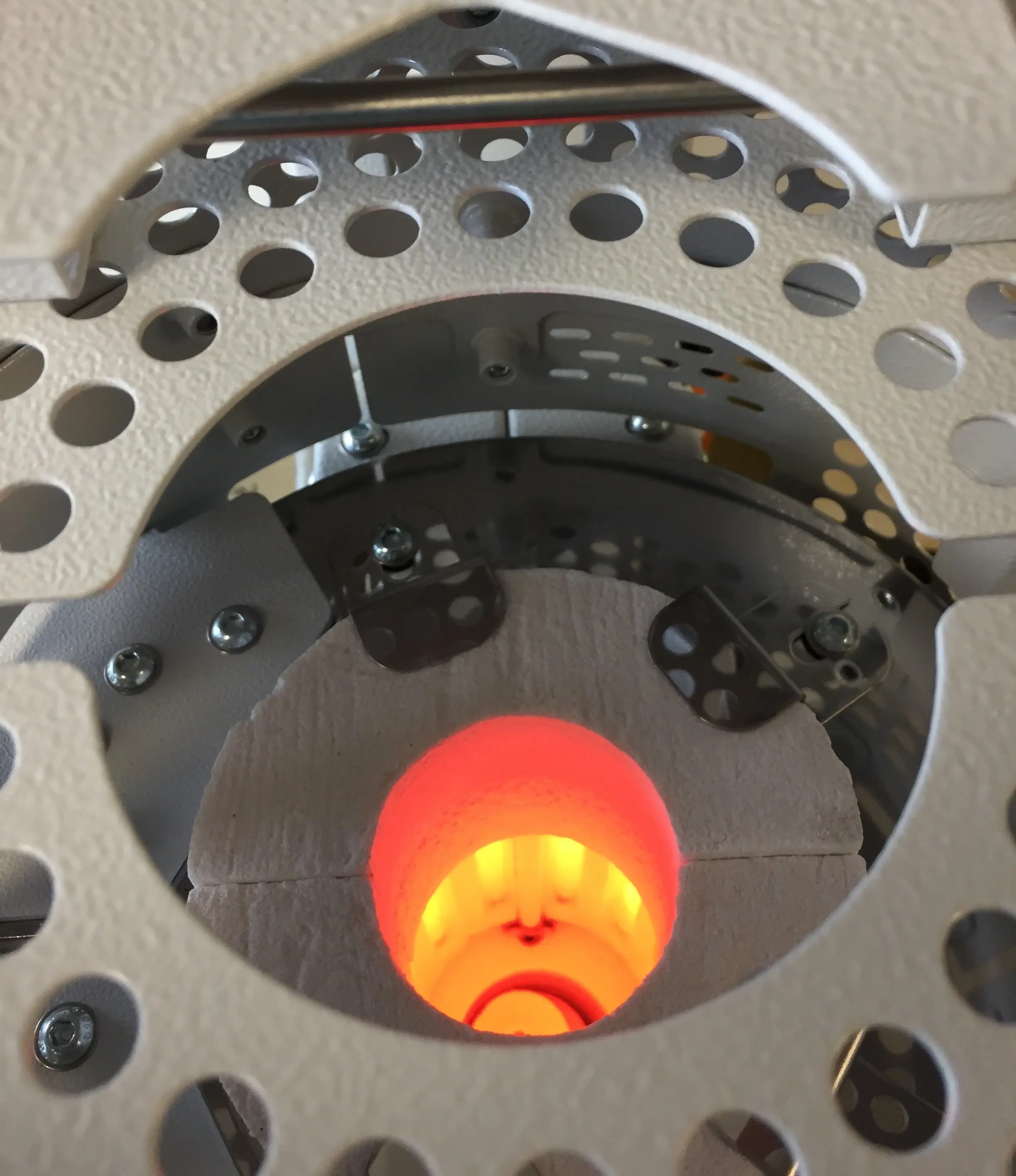We are the Goodwin Group in the Department of Chemistry The University of Manchester, working to further our understanding of the f-block elements – lanthanides and actinides. We predominantly focus on non-aqueous synthetic chemistry to realise well-defined coordination geometries to stabilise highly reactive low- and high-oxidation states and bonding motifs. This is achieved through fundamental inorganic/organometallic synthetic methodologies (solid-state and solution chemistry). By understanding the link between metal coordination environment and electronic structure properties we hope to tune the physicochemical properties of f-block ions and direct these toward novel chemistries and quantum chemical properties.
This is achieved using techniques which include SQUID magnetometry, EPR spectroscopy, UV-vis-NIR spectroscopy as well as advanced computational methodologies. See collaborations.
3_structure.webp)
3_structure.webp)
Transuranium bonding and covalency
The actinide elements sit at the bottom of the periodic table. All are radioactive, and are amongst the least understood of all elements. While thorium and uranium studies have become somewhat mainstream in academic laboratories, the study of the elements beyond uranium – the transuranium elements, has largely remained the purview of large facilities such as National Laboratories (like Los Alamos National Laboratory). This is due to the need for specialist handling and containment infrastructure for these highly radioactive and scarce materials.
Radiological safety concerns and material availability typically limit synthetic chemistry reaction scales in line with how far along the series the element lies. For example, while a reaction using 35 mg of [NpCl4(DME)2] might be "routine", moving to americium leads to limits of ~5 mg, and even less for Cf. This means that our experimentally-derived understanding of periodicity across the actinide series is hampered significantly compared to every other corner of the periodic table. Despite the difficulties in this chemistry, progress has been made in studying unique bonding environments such as the first Am–C or Am–Se bonds and helped to further our understanding of the periodicity in these elements. While tremendous historic insight has been made in contextualising the behaviour of these elements in solid-oxides and binary halides, there is still a plethora of unanswered questions regarding their solution and molecular chemistry.
See below for examples from Conrad's PhD and Postdoctoral work.
- Isolation and characterization of a californium metallocene
- [AnI3(THF)4] (An = Np, Pu) Preparation Bypassing An0 Metal Precursors: Access to Np3+/Pu3+ Nonaqueous and Organometallic Complexes
- Structural and Spectroscopic Comparison of Soft‐Se vs. Hard‐O Donor Bonding in Trivalent Americium/Neodymium Molecules
- [Am(C5Me4H)3]: An Organometallic Americium Complex
- In-Plane Thorium(IV), Uranium(IV), and Neptunium(IV) Expanded Porphyrin Complexes
- A Single Small-Scale Plutonium Redox Reaction System Yields Three Crystallographically-Characterizable Organoplutonium Complexes


Structure/electronic property correlations
Crystal field effects in 4/5f ions are much smaller than for d-block analogues, though still significant. During the last few years, we investigated several highly geometrically constrained 4/5f complexes utilising sterically demanding bis-silylamide ligands [vis, N**, {N(SitBuMe2)2}; and N††, {N(SiiPr3)2}] and then studied what the effects of these novel ligand geometries have on the electronic structure of the metal ions.
Notable advances include the first trigonal-planar actinide complex [U(N**)3], as well as near-linear Ln(II) complexes, [Ln(N††)2], and their isoelectronic trigonal-planar analogues [K(2.2.2-crypt)][Ln(N**)3] (Ln = Sm, Eu, Tm and Yb).
See below for examples from Conrad's PhD and Postdoctoral work.
- Investigation into the Effects of a Trigonal-Planar Ligand Field on the Electronic Properties of Lanthanide(II) Tris(silylamide) Complexes (Ln = Sm, Eu, Tm, Yb)
- Physicochemical properties of near-linear Ln(II) bis-silylamide complexes (Ln = Sm, Eu, Tm, Yb)
- Homoleptic Trigonal Planar Lanthanide Complexes Stabilized by Superbulky Silylamide Ligands
- [UIII{N(SiMe2tBu)2}3]: A Structurally Authenticated Trigonal Planar Actinide Complex


Low-oxidation state lanthanide chemistry
The field of low-oxidation state f-block chemistry has undergone a resurgence in the last decade, with the availability of the +2 oxidation state having been discovered for every 4f element (save Pm), and also examples of U(II), Np(II), and Pu(II); as well as several new Th(III) complexes, and the discovery of Th(II). However, most of these examples use substituted derivatives of the ubiquitous cyclopentadienide (Cp, {C5R5}) ligand. This limits the information we can obtain about how these new oxidation states affect metal-ligand interactions, because all examples use the same ligand-type!
By utilising bulky ligands and bespoke synthetic routes to low-oxidation state complexes we hoped to synthesise new examples of non-traditional Ln(II) complexes. One such route is the use of a purpose-built and extremely rare reactor system (pioneered by the Evans group) constructed by Conrad during his PhD in the Mills Group which uses the high-temperature solid-state reaction between Ln metal and I2 (as in the above scheme) to routinely produce up to 20 g of LnI2.
Collaborators
- Dr Bess Vlaisavljevich
- Dr Andrew J. Gaunt
- Drs. Ping Yang and Enrique Batista
- Dr. Nicholas Chilton and his group
- Prof. Richard E. P. Winpenny
- Prof. Eric J. L. McInnes
- Prof. Stephen T. Liddle
- Prof. William J. Evans
- Prof. Peter Roesky
- Dr. Floriana Tuna
- Dr. Louise S. Natrajan
- Prof. Stephen Hill
- The Photon Science Institute - UoM